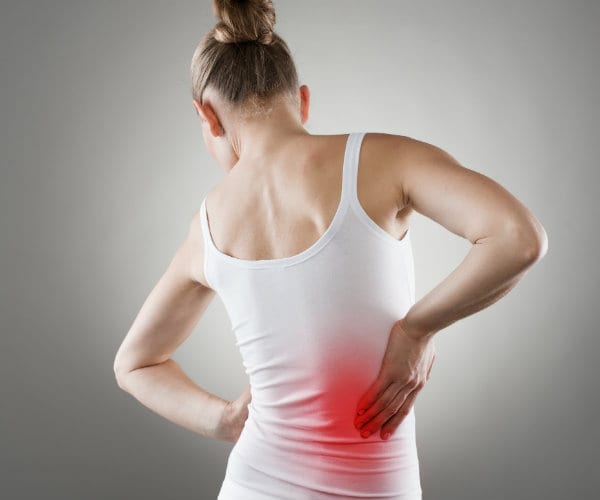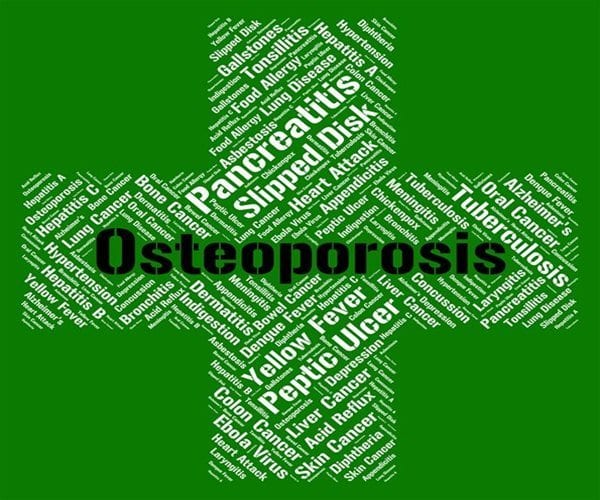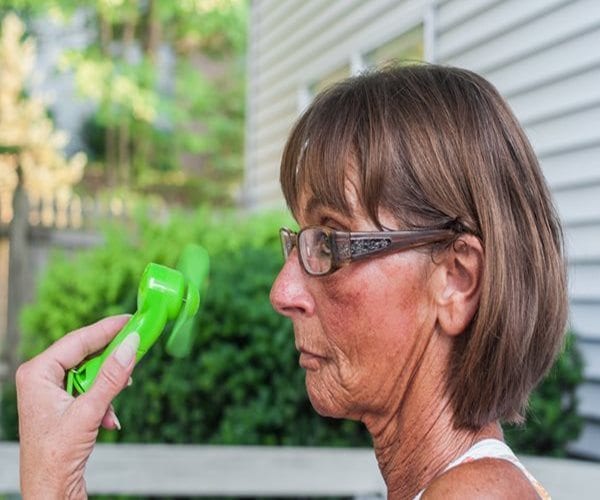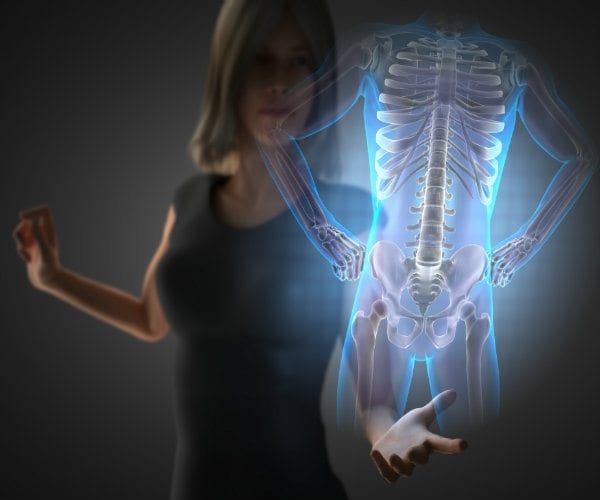Anti Aging
Back Clinic Anti Aging Chiropractic and Functional Medicine Team. Our body is in a constant and never-ending battle for survival. Cells are birthed, cells are destroyed. Scientists estimate that each cell must withstand over 10,000 individual assaults from reactive oxygen species (ROS) or free radicals. Without Fail, the body has an incredible system of self-healing that withstands the attack and rebuilds what has been damaged or destroyed. This is the beauty of our design.
To understand the biology of aging and translate scientific insight into interventions that improve late-life health through treatments. It is useful to have a clear, consensus view on what exactly constitutes anti-aging treatment.
Since before the days of Ponce de Leon’s search for longevity, man has always been enticed by the chance of eternal youth. Chiropractic care with its health movement is a powerful method of stabilizing and enhancing this self-healing ability. Dr. Alex Jimenez discusses concepts surrounding the anti-aging pandora.
.

by Dr Alex Jimenez | Anti Aging
Here’s a scenario that’s probably easy for you to imagine: You’ve just endured a grueling flight to a far-off travel destination. After your arrival at the airport, you spot your luggage on the baggage carrousel. But as grab it, you feel that scary twinge in your back that feels like a pulled muscle or worse.
If this sounds like something you’ve experienced, you have plenty of company. Thousands of Americans suffer low back injuries when traveling each year. And, the truth is, the end of a long journey is the most dangerous moment for a traveler’s back, according to orthopedic specialists.
“When you rush to get your luggage and throw it on the cart to be the first to get customs and out, that’s when you can your hurt your back,” says Dr. Garth Russell, founding member of the Columbia Orthopedic Group in Missouri.
Travel can be a prescription for back pain and injury, experts agree. The long periods of forced immobility in airplanes, lifting the luggage packed with heavy documents or vacation gear, the fatigue, and the time pressure — not to mention the less-than-firm hotel beds — can add up to back spasms and sciatic nerve pain.
Since back pain is the most frequent cause of lost work days after the common cold, according to the American Academy of Orthopaedic Surgeons, it’s crucial take prudent precaution to protect your back when traveling.
“Summer vacation can spell disaster for your aching back if you don’t pay attention to how you move and how you prepare yourself for the journey,” says Dr. Richard Berger, a noted orthopedics surgeon and assistant professor of orthopedics at Rush University in Chicago. “People will be traveling in planes, trains and cars for hours and back pain can ruin even the best laid vacation plans.”
But Berger tells Newsmax Health a handful of back-saving tips can be the difference between a great vacation and a panful experience away from home. Here are his best suggestions:
Lift luggage in stages. “Move slowly and deliberately,” he says. “It’s the sudden jerking movements going full throttle that injure most patients.”
Never twist while lifting. This common error is the most frequent way people injure their back, says Berger, who explains that it takes much less force to cause injury when twisting than when lifting straight up and down.
Ask for help if you have back trouble. “Don’t hesitate to ask another passenger or flight attendant for help,” he says. “Explain your condition and most folks will be happy to assist.”
Ship bags instead. Mail your essentials to the designated destination and avoid luggage entirely. “With airline fees for checked luggage skyrocketing, this may also turn out to be an economical solution, too,” he says
Pack light. Moving a few light bags instead of one very heavy one, will likely avoid back injuries. “This is especially true if you are on an extended vacation with multiple stops so you have to transfer your bags in and out of your vehicles or into overhead bins and compartments,” he notes.
Plan for medication. If you are running low on your pain medication, get new prescriptions from your doctor and fill them so that you have enough. It may seem obvious but do not check medication with your luggage. “You may need them in flight or you may get delayed so that you may need more meds that you originally expected,” he says. Also: Bring backup over-the-counter medications such as Tylenol, Motrin or Aleve.
Ice, ice, baby. If you do suffer a back injury a pack of ice may be your first line of defense. Your flight attendant can fill a bag for you. Place it on your back for 20 minutes, then off for 20 minutes. Products like Icy Hot or Bengay Pain relief medicated patches may also provide relief.
Heat wraps work. There are disposable, portable hot packs that heat up after you open them and you can apply them as needed. Ask your pharmacist to suggest a few brands and check with your airline to make sure they allowed.
Muscle relaxants. These not only treat but may avoid back issues during a long flight. Ask your doctor if they are right for you.
Get the right seat. An aisle seat makes it easier to get in and out of your seat. Moreover, an aisle seat offers you the freedom to get up and move around more frequently.
Get up and move. This is crucial because sitting for an extend period of time stiffens the back muscles, putting stress on the spine and can cause pain. Get up to stretch often. Stretch the hamstrings muscles especially which will reduce stiffness and tension. If you are taking a road trip, stop for a stretch break every couple of hours.
Use a lumbar pillow. If you don’t own your own lumbar support, use a pillow, blanket or rolled up jacket to support the national curve of your back when traveling. Speaking of pillows, if you are staying in a hotel, your may sleep better if you bring your own pillow.

by Dr Alex Jimenez | Anti Aging, Seniors
Older adults who don’t have a history of cardiovascular problems don’t benefit from taking cholesterol-lowering statin drugs, says a new study of seniors with high blood pressure and moderately high cholesterol.
Researchers from New York University School of Medicine studied the data from 2,867 older adults and found that they had the same risk of dying as seniors who didn’t take statins, and also suffered the same amount of heart attacks and strokes. In fact, statins may have caused more harm than good since more deaths occurred in the group taking statins.
“This study doesn’t surprise me at all,” says Dr. David Brownstein, a board-certified physician and editor of the newsletter Dr. David Brownstein’s Natural Way to Health. “In fact, it should be expected.
“When you know the mechanisms of how statins work in the body, how anyone could predict that they will prolong a person’s life is beyond me, particularly in older people,” Brownstein tells Newsmax Health.
“Seniors depend on adequate cholesterol for a host of reactions in the body, including proper brain function and proper hormonal production,” he says.
“Some studies have shown that statins increase the risk of Alzheimer’s and Parkinson’s, even if you take CoQ 10 to help cope with some of statins’ side effects, because statins lower cholesterol.
“The highest concentration of cholesterol in the body is in the brain,” Brownstein says. “The brain actually produces its own cholesterol, and it needs cholesterol to function properly.
“Since statins have been shown to fail in 97 to 99 percent of the people who take them, I can’t imagine — with those odds — why anyone would consider taking this drug when they know the side effects are severe and many.”
Still, statins continue to be prescribed and are one of the most commonly prescribed medicines in the world. “Big pharma has convinced doctors that statins are much more effective than they are by using questionable statistical methods,” Brownstein says. “Unfortunately, most doctors don’t understand how to read statistics and don’t know how to read the studies.
“This isn’t the first study to show that statins harm patients,” Brownstein says and points to a 2015 study, published in Critical Care Medicine, which found that the lower a patient’s cholesterol levels, the higher the risk of dying during the 30-day period following a heart attack.
“The increased risk the researchers found isn’t nominal,” he said. “Patients with low LDL (bad) cholesterol levels coupled with low triglyceride levels had an astounding 990 percent increased risk of dying!”
A 2016 study published in the British Medical Journal found that not only do high cholesterol levels not shorten the lifespan of senior citizens, they may live as long — or longer — than their peers with low levels.
The results, which came after analyzing more than 68,000 patients over the age of 60, questioned conventional medicine’s belief that seniors with high cholesterol, especially high levels of low-density lipoprotein or LDL, are more at risk of dying from heart attack and stroke, and need statin drugs to lower their cholesterol levels.
The study suggested that high cholesterol may, in fact, be protective against diseases which are common in the elderly, including neurological disorders like Parkinson’s and Alzheimer’s.
“If your cholesterol is elevated, the first thing you need to do is to look at your diet,” says Brownstein. “You should follow a healthy diet by eliminating refined foods and eating whole, organic foods. Your cholesterol levels will naturally drop to their optimal levels.
“But to chemically lower them with a drug that fails 97 to 99 percent of the time — I don’t understand it.”
If you’d like a food or supplement to help you lower your cholesterol naturally, consider the following:
Red yeast rice. According to the University of Maryland, red yeast rice has the same chemical composition as the prescription drug lovastatin. A five-year, double-blind study of patients who had suffered a heart attack found that an extract of Chinese red yeast rice, Xuezhikang (XZK), reduced the risk of repeat heart attacks by 45 percent. The extract also decreased heart bypass surgery, cardiovascular mortality, and total mortality by a third.
Bergamot. Several studies have found that bergamot, an extract made from the bergamot fruit and used to give Earl Grey tea its distinctive flavor, lowers cholesterol safely and naturally. Several studies have shown it reduces LDL (low density or “bad”) cholesterol and triglycerides, while raising levels of HDL (good) cholesterol.
Green tea. Green tea lowers bad cholesterol and raises good cholesterol. Several studies have found that green tea blocks the absorption of up to 89 percent of cholesterol from foods. Black tea has also been found to be protective.
Research carried out by the universities of Glasgow and Mauritius found that drinking three cups of tea daily reduced LDL cholesterol by more than 16 percent when compared with a control group who drank the same amount of hot water. Scientists believe the health benefits are due to antioxidants in the tea called polyphenols, which were boosted by 400 percent in the tea-drinking group.
Oatmeal. Numerous studies conducted over the past 50 years have shown that oatmeal reduces bad cholesterol. The Mayo Clinic recommends eating one-and-a-half cups of cooked oatmeal each day. Oatmeal contains soluble fiber, a cholesterol-lowering component of foods which is also found in beans, apples, and many other whole foods. A study published in the American Journal of Clinical Nutrition found that oats lowered cholesterol levels almost as well as prescription cholesterol-lowering drugs.

by Dr Alex Jimenez | Anti Aging
Bisphosphonates, which are sometimes used to treat osteoporosis, do not prevent fractures in women who take them for more than 10 years. The drugs include popular prescription drugs such as Boniva, Fosamax Plus D, and Reclast.
Osteoporosis causes thinning of the bones, reducing bone density and making them fragile and putting them at higher risk for bone fractures.
Risk for osteoporosis increases as we age. Studies show that 50 percent of women over the age of 50 will suffer a bone fracture due to osteoporosis.
Bisphosphonates increase bone mineral density, which strengthens bones and is thought to make them less likely to fracture. Studies have shown that taking these drugs for one to four years decreases the risk of fractures in women with low bone density, but little is known about whether taking them for longer periods of time has the same effect.
A study, which was published in the Journal of the American Geriatrics Society, examined whether older women taking bisphosphonates for 10-13 years had fewer bone fractures than older women with similar fracture risks who took these medicines only briefly.
Researchers looked at information from 5,120 women with a high risk for bone fractures who used bisphophonates. They discovered that women who took bisphosphonates for 10 to13 years had higher fracture rates, compared with women who took the medication for two years. Taking bisphosphonates for shorter periods of time was not linked to a higher fracture risk.
Recent studies have found that natural foods and supplements can strengthen aging bones. An Irish study examined the relationship between dairy intake and bone density, and found that the hip bones of senior citizens who ate the most were denser than the hip bones of those who ate the least.
Researchers at the Universities of Bristol and Eastern Finland followed 2,245 middle-aged men for 20 years, and found that men with lower blood levels of magnesium had an increased risk of fractures, particularly fractures of the hip.
Men who had higher blood levels of magnesium lowered their risk by 44 percent. None of the men who had very high magnesium levels suffered a fracture during the 20-year follow-up. However, dietary magnesium intake was not found to be linked with fractures. Only supplements were shown to be beneficial.
By 2020, an estimated 61 million American adults will have low bone mineral density.

by Dr Alex Jimenez | Anti Aging
Irritating problems such as hot flashes and night sweats cause distress in many women at menopause, and a new study published in the journal Menopause found that hot flashes are associated with a higher body mass index (BMI)
The study of 749 Brazilian women aged 45 to 60 years showed that obese women suffered more severe hot flashes than women of normal weight. The hot flashes caused them to stop certain activities and also decreased their work efficiency.
The data support the “thermoregulatory theory,” which proposes that BMI is positively associated with vasomotor symptoms such as hot flashes and night sweats, because body-fat tissue acts as a strong heat insulator. The insulation makes the distribution of heat more difficult, which then causes obese women to suffer more hot flashes.
The study also confirmed associations between an increased BMI and other symptoms, such as joint and muscular pain and more intense urinary problems.
“This study supports earlier studies that found that women who are heavier tend to have more hot flashes, particularly close to menopause,” says Dr. JoAnn Pinkerton, executive director of The North American Menopause Society.
“In some studies, but not all, weight loss and exercise have both been shown to reduce hot flashes in women who are obese, thus giving women even more reason to create a healthier lifestyle for themselves,” Pinkerton said.
A recent study also published in Menopause found that women who have frequent hot flashes may be at an increased risk of heart disease, especially those in younger midlife (40 to 53 years). The study found that hot flashes may signal poor vascular function that can lead to heart disease. “Hot flashes are not just a nuisance, says Pinkerton. “They have been linked to cardiovascular, bone, and brain health.”

by Daniel Alvarado B.S.E.P (Exercise Physiologist) | Anti Aging
Mother Nature plays a dirty trick on women. Just as they begin planning to enjoy their lives as empty-nesters, their lives often change overnight as they cope with night sweats, ballooning weight, aching joints, and fuzzy thinking associated with menopause.
“What’s going on?” asks Dr. Erika Schwartz, author of The New Hormone Solution. “It’s simple,” she says. “Hormone levels are plummeting and wreaking havoc in our bodies.
“It’s a dirty joke Mother Nature has just played on us,” says Schwartz, nationally recognized expert on hormone supplementation. “We’ve had and raised our families and made sure the species will survive. We are no longer needed, so Mother Nature will just get rid of us. We have now become road kill.”
While not as obviously disruptive as menopause, men’s sex hormones are also declining at mid-life. And it’s not just sex hormones. Both sexes may suffer from an imbalance of other hormones, such as thyroid and adrenal. Lower hormone levels accelerate aging, bringing on heart problems, diabetes, cancer, arthritis, and other chronic diseases.
But you don’t have to suffer and resign yourself to the infirmities of advancing age. “It doesn’t have to apply to any of us if we don’t want it to,” says Schwartz. The answer, she says, is replacing lost hormones with human identical hormones, which are available to both men and women to replace hormones lost in aging.
“Human identical hormones have the same molecular structure as those produced by the body,” says Schwartz. “The key is treatment that is individualized to each patient’s particular needs.”
Schwartz explains the confusion over the term “synthetic” as it applies to hormones. “All hormones are synthetic because they are made in a lab, but human identical hormones are synthetically manufactured hormone drugs that look identical to the human hormone molecules our bodies make,” she says.
“They are made from soy and yam oils by pharmaceutical processes of concentration and purification that produce hormone powders,” she says. “These powders are then placed in different preparations, such as pills, patches, and creams, for us to take.
“These hormones look identical to our own hormones — estrogen, progesterone, testosterone, thyroid, growth hormone, and insulin.
“Synthetic doesn’t mean bad,” she says. “It just refers to creating specific molecules in the laboratory — in this case hormones.”
Replenishing hormone levels can eliminate hot flashes, mood swings, depression, bone loss, weight gain, digestive problems, and many other signs of middle-age, and restore vigor and energy.
But relatively few people are getting replacement hormones. Why? One reason is that many doctors don’t understand human identical hormones and know how to use them, says Schwartz. “There’s no one to teach them. Information isn’t even passed from doctor to doctor, it’s passed from patient to patient who then takes it to the doctor.”
Pharmaceutical companies apparently neither seriously study nor promote human identical hormones. “Since they have the same molecular structure as those produced by our bodies, human identical hormones can’t be patented by drug companies, so they have no financial incentive to conduct studies,” Schwartz says.
The second reason is fear. Until 2002, conventional doctors prescribed synthetic hormones to women undergoing menopause: Premarin and Prempro (conjugated estrogens derived from the urine of pregnant horses), and Provera (a man-made type of progesterone). Not only did doctors believe they safely reduced the symptoms of menopause, but that they also protected women from heart disease, cancer, and osteoporosis.
However, a 10-year study conducted by the National Institutes of Health called the Women’s Health Initiative (WHI), turned the medical world upside down by proving that the hormone replacement therapy doctors prescribed increased the risk of heart attacks, strokes, and breast cancer.
Almost immediately, doctors refused to prescribe hormones to millions of women, and their symptoms quickly returned. As a result, many physicians prescribed antidepressants, which only treated a symptom and not the cause, which was an imbalance of hormones.
A year later, new guidelines released by the American College of Obstetrics and Gynecology indicated it was safe to prescribe the same drugs in lower doses for shorter periods of time, although their safety has never been proven.
At the same time, American pharmaceutical companies conducted no studies on the safety of human identical hormones, while most doctors ignored — and continue to ignore — earlier studies conducted in both the United States and Europe prior to 2002 which found that bioidentical hormones were safe and effective.
In fact, a 2013 Danish study found that women taking human identical hormones had a lower risk of heart disease, stroke, and thromboembolism than those not taking hormones.
The FDA has approved some human identical hormones, and in her practice, Schwartz prescribes them as well as compounded customized formulas, depending on the blood levels of each patient.
How do you find a doctor that’s competent to prescribe human identical hormones? “Ask friends,” says Schwartz. “Some doctors realize there’s a big market for natural hormones, and some who don’t know much about them have hung out their shingle. The best way to find a good doctor in your area is by word of mouth.
“You want a doctor who knows what they are doing and cares about you, and isn’t just jumping on the bandwagon and is trying to make money off of you.”
Human identical hormones can change your life, says Schwartz. “Look around,” she says. “You see people who look and feel great well into their golden years. That can be you.”

by Dr Alex Jimenez | Anti Aging
A diet rich in fiber can help reduce knee pain, and the risk of developing painful osteoarthritis, according to a first-of-its-kind study published in the Annals of the Rheumatic Diseases.
The findings, which draw from two different long-term studies, add to the list of health benefits of a fiber-rich diet, including reductions in blood pressure, weight, inflammation, and blood glucose.
The first study, known as the Osteoarthritis Initiative (OAI), tracked the health of nearly 5,000 older Americans with or at risk of developing the immune disorder, also known as degenerative joint disease or “wear and tear” arthritis, beginning in 2004. The intent of this study was to use the data collected to determine potential risk factors for this condition.
The second, known as the Framingham Offspring cohort study, tracked more than 1,200 adult children of the original Framingham Heart Study, which began in 1971.
Both studies used a questionnaire to determine the dietary fiber intake of each participant, finding that the average person’s intake was between 15 and 19 grams of fiber daily.
Analysis of the results of both studies found that eating more fiber is associated with a lower risk of painful knee osteoarthritis.
Those in the OAI study who ate the most fiber had 30 percent lower risk, while high-fiber diets were linked with a 61 percent reduced risk in the Framingham research group. Additionally, eating more fiber was linked with a significantly lower risk of worsening knee pain.
“These data demonstrate a consistent protective association between total fiber intake and symptom-related knee [osteoarthritis] in two study populations with careful adjustment for potential confounders,” the researchers concluded.

by Dr Alex Jimenez | Anti Aging
Osteoporosis and low bone mass, which puts folks at increased risk of this debilitating disease, affects a whopping 54 million people in the United States. Ten million actually have the condition while another 44 million have low bone density which puts them at greater risk.
This means that half of all adults over the age of 50 are at risk of breaking a bone and should be concerned about bone health, says the National Osteoporosis Foundation.
“We have our blood pressure checked regularly, and our cholesterol levels measured, but too many of us ignore screening for bone health,” says Dr. E. Michael Lewiecki, director of the New Mexico Clinical Research and Osteoporosis Center.
“Elevated blood pressure can lead to a stroke while elevated cholesterol levels may lead to a heart attack. Low bone density can lead to hip fractures which can also be deadly. “
Studies show that approximately one in two women and up to one in four men age 50 or older will break a bone due to osteoporosis.
“This can seriously affect your independence and lifestyle,” Lewiecki tells Newsmax Health.
May is Osteoporosis Awareness and Prevention Month and the National Osteoporosis Foundation, www.nof.org, has compiled a list of tips and information on how you can prevent, manage, and even reverse the potentially debilitating disease.
Here’s a primer for action, including five steps you can take to protect yourself:
Know your risk factors: Some factors that put people at increased risk uncontrollable, but others involve lifestyle behaviors that can be modified.
Uncontrollable risk factors include:
- Being over the age of 50
- Being female
- Menopause
- Family history of osteoporosis
- Low body weight or being too thin
- Broken bones or height loss
Controllable risk factors include:
- Not getting enough calcium or vitamin D
- Not eating enough fruits and vegetables
- Getting too much protein, sodium, and caffeine
- Having an inactive lifestyle
- Smoking
- Drinking too much alcohol
- Losing weight
“It’s important to note that osteoporosis and the broken bones it can cause are NOT part of normal aging,” Claire Gill, chief marketing officer of NOF, tells Newsmax Health.
“There is a lot you can do you protect your bones throughout life. Osteoporosis prevention should begin in childhood, but it doesn’t stop there. Whatever your age, the habits you adopt now can affect your bone health for the rest of your life.”
Take action now: Lewiecki says it’s important to act to prevent osteoporosis before you have a problem with bone loss.
“Although there is a genetic predisposition that affects 80 percent of the people who develop osteoporosis, there is a lot you can do with proper diet, exercise, and supplementation that can optimize your genetics,” he says.
“Making sure that you are getting enough calcium and vitamin D, exercising against gravity, and checking bone density regularly are just a few ways to protect and maintain good bone health.”
Get screened: Lewiecki recommends that all women over the age of 65 and men over the age of 70 get screened annually.
“And if you’ve suffered previous bone fractures, screening should begin at age 50,” he says.
There are medications used to treat osteoporosis. One type helps rebuild new bone, while another slows down bone cells to allow more calcium absorption and prevent more loss.
“”It’s kind of a one-two punch,” notes Lewiecki.
Osteoporosis usually has no symptoms until the person fractures a bone, which is why it is nicknamed “the silent disease.”
“We see people who have lost height or are slumped over and take an X-ray of the spine and sure enough there is a fracture,” says Lewiecki. “Two thirds of people with spinal fracture don’t even know they have them. That’s why it is so important to discuss bone health with your doctor.”
Boost your nutrition: Diet can play an important role in managing osteoporosis says Dr. Gabe Mirkin, who is board certified in sports medicine. A 2010 Rotterdam study of 14,926 people 45 or older, who were followed for 20 years, found that a diet based on vegetables, fruits, dairy, and fish was associated with:
- Markedly reduced risk of bone fractures
- Higher bone density as seen on x-rays
- Stronger bones measured by bending strength tests
“Diets that included a lot of sweets, processed meats or alcohol were associated with increased risk for fracture and weaker, more unstable bones,” Mirkin tells Newsmax Health.
Harvard Medical School researchers noted that calcium is an important nutrient for building bone and slowing the pace of bone loss but it’s not a “magic bullet.” It needs its indispensable assistant, vitamin D, to help the body absorb calcium.
Experts recommend taking 1,000 milligrams (mg) of calcium daily for adults up to age 50 and 1,200 milligrams for people aged 51 and older when bone loss accelerates.
Fortified foods can help provide the vitamin D your need to absorb calcium efficiently or you can manufacture your own by spending 5 to 30 minutes in the sun daily, making sure arms and legs are exposed.
Get moving: Exercise is also an important component of bone health. But always check with your health care provider to ensure you embark upon a safe program.
“You may want to avoid high impact weight bearing exercises like jogging, running, or jumping rope if you are increased risk of fracture,” notes Gill. “Low-impact weight bearing exercises can also help keep bones strong and are a safe alternative. Elliptical machines and fast walking on a treadmill or outdoors are two examples.”
In addition, she recommends lifting weights or using exercise bands to offer resistance against gravity and build stronger bones.
“Osteoporosis is manageable,” she says. “Although there is no cure, there are steps you can take to prevent, slow down or stop its progress. In some cases, you may even be able to improve bone density and reverse the disorder to some degree.”





